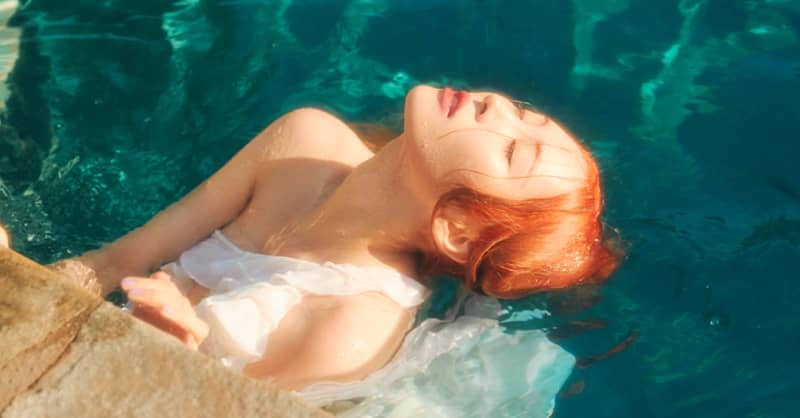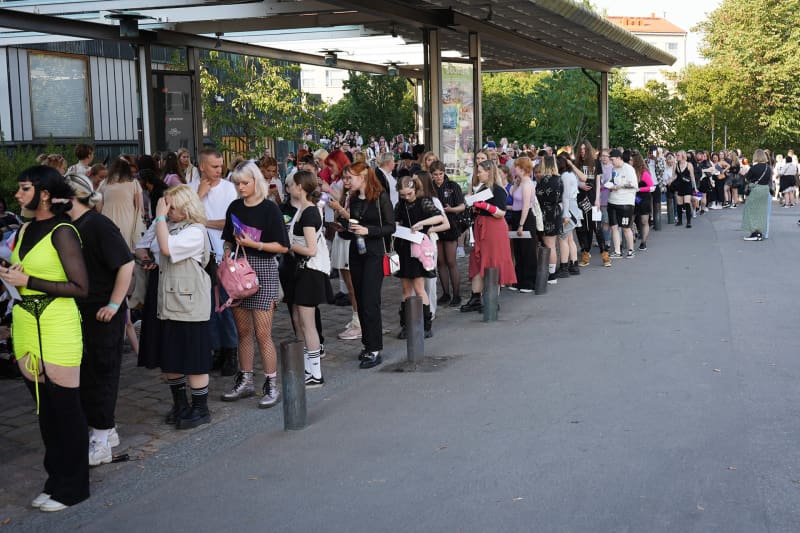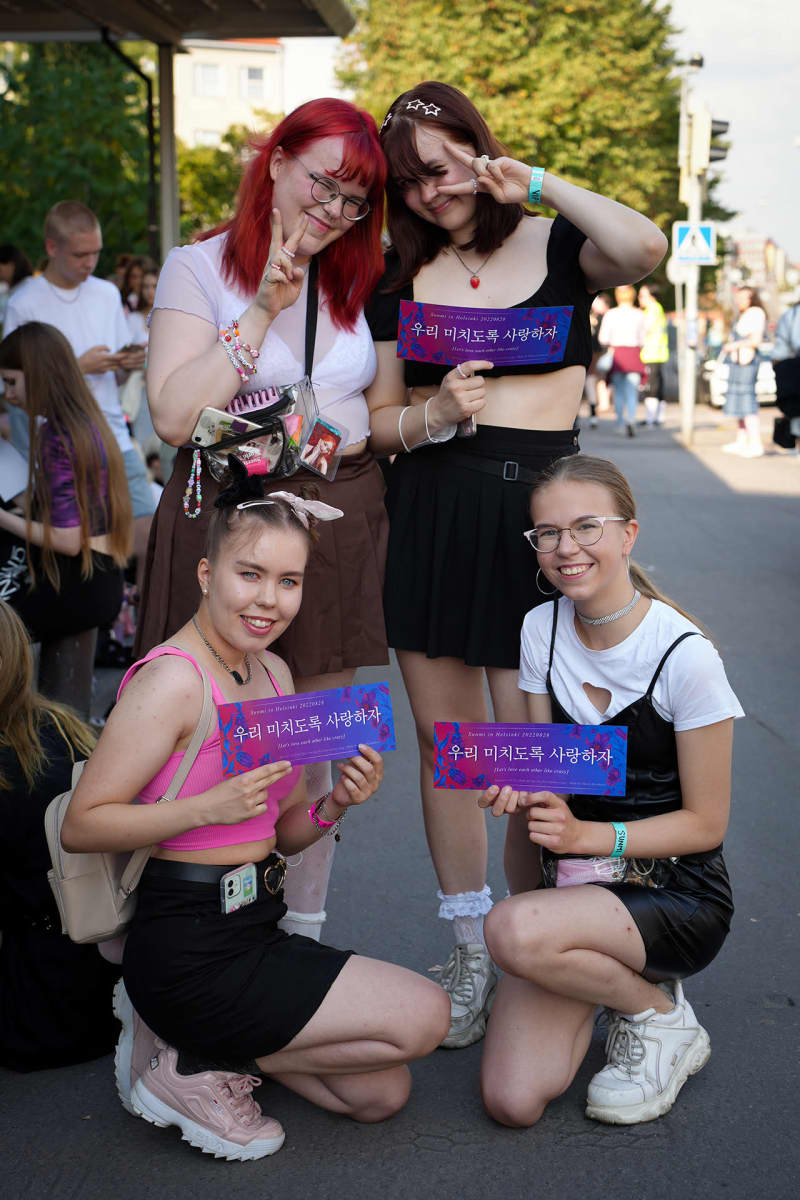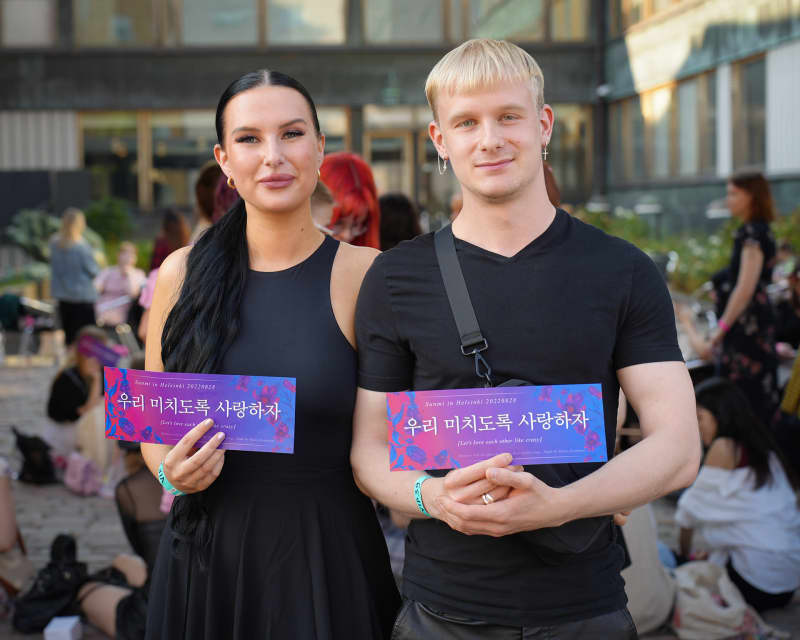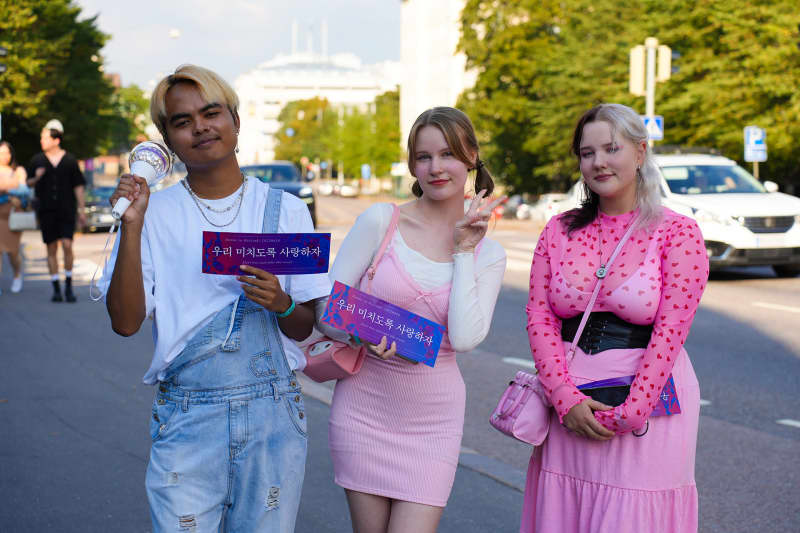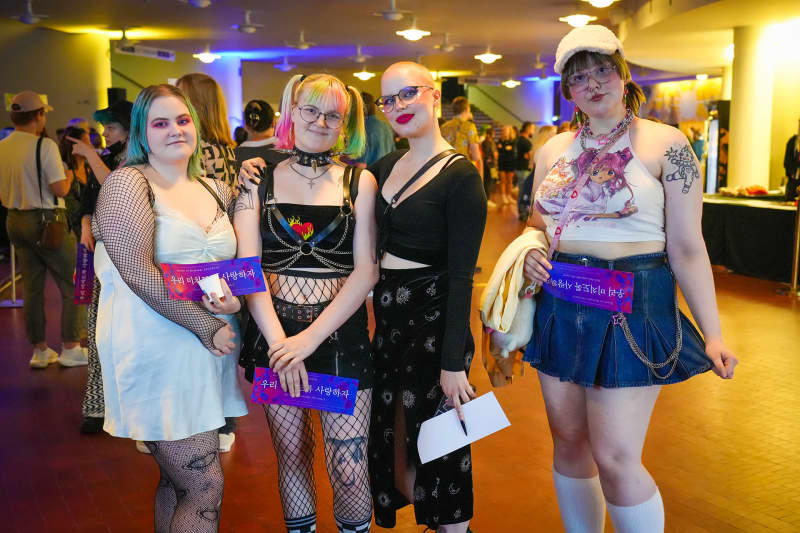Sunmi, the iconic name of K-pop, performed at Helsinki’s Kulttuuritalo on Sunday. The concert revealed a lot of the mechanisms of K-pop, which is gaining more and more popularity in Finland as well.
The four women at the front of the queue have already arrived at night and slept in front of the Kulttuuritalo.
The atmosphere is expectant and sometimes gets rowdy: Korean pop music or K-pop is heard from the kajars, and some take small dance steps. For many, this is the first contact with a big Korean pop star’s concert, which otherwise sold out in a couple of minutes.
The interview is cancelled
Around this gig, Sunmi initially granted one-on-one interviews to Finnish journalists, albeit with quite strict conditions. According to the instructions, the questions had to be sent in advance a week before to the artist’s representatives, in the interview situation only audio could be recorded and no pictures could be taken. The media was also banned from filming for the entire duration of the concert.
On the other hand, the K-pop machinery is known for the fact that everything is planned and executed to the last minute. Unfortunately, this image is shattered when I find out on Sunday a little after five o’clock that Sunmi will not give an interview. This was reportedly already known the day before, but no one has remembered to report it.
Canceling already arranged interviews happens from time to time: usually the reason is that the artist wants to save his voice or is tired. The international organizers, consisting of Brits and French, among others, regret the situation, and instead of Sunmi, a Korean tour manager is hired, who tells a few anecdotes about how disciplined life k-pop stars lead.
The music comes from tape, the singing is genuine
London, Paris, Warsaw, Amsterdam – Sunmi’s show starts with an impressive video shot, covered by an industrial beat and sirens, listing the European and American cities of the tour: after Helsinki, we jump across the ocean to Chicago.
The uproar of the 1,400-strong audience is already intoxicating at this point, and more screams arise when Sunmi and the dancers hit the stage and start the _Siren_ song.
Dressed in a revealing gold glitter outfit, the svelte artist has regular features and flawless skin sprinkled with silver glitter and looks as good as she looks in the pictures. The fans placed on the stage blow cool air.
It is a playback show where there is singing, but the music comes from the background tapes, with the exception of a later experience.
Dance choreographies and a changing background video for each song are the main focus. Two male dancers lift Sunmi into the air a couple of times, but the dance performances do not offer any exceptionally startling acrobatics.
The show, which started briskly, suddenly stops after the second song: it turns out that Sunmi’s reading device, i.e. the teleprompter (which is also used by the news anchors), is stuck and that the artist is now feeling a bit like an orphan.
Korean artists’ use of a teleprompter is justified not only by the fact that countries and places change at a rapid pace during tours, but also by linguistic factors: Sunmi had also learned Finnish, even complete sentences.
_– I’m really happy, I love you!_
Sometimes the atmosphere is even ecstatic: especially in front of the stage, some fans cry, some scream.
At some point, Sunmi presents a sign on stage, which is decorated with the text _Sunmi, be my girlfriend_. In the mainly female audience, the sign arouses huge admiration and cheers.
Giving gifts is an essential part of East Asian culture, so various stuffed animals, a pink bag (which Sunmi puts on) and flowers get lost on the stage. Light sticks are also a sign of fandom. K-pop artists all have their own color, and the _Sunmi Official Light Stick_ emits a pale light.
The artist grabs the bass
Sunmi’s almost two-hour long concert was a typical and mannered K-pop show, but there were a few surprising elements. The gig was broken up by stylish, experimental, artistic and grainy short films, which fit surprisingly well with the song parade.
Sunmi also got excited to really play bass in a couple of songs. According to him, the end result required hard training:
_– What did you think of my bass? Bas-sos-ta, is this right?_
Sunmi has also been exceptionally open about her mental health issues, which have been a growing problem among K-pop artists – or have only recently been brought to attention. On his tours, he performs the song _Borderline_, which is about an unstable personality disorder.
It seems that in contrast to the flawless choreography and vocal performances, some of the artist’s interludes had a genuine sense of improvisation, even fragility.
At the end of the concert, Sunmi and Suomi are figuratively only one letter away from each other: the artist throws a blue cross flag over his shoulders.
After the concert, the buyers of the VIP ticket, which is more than three times more expensive than the cheapest ticket option, get to meet their fans face-to-face, and the package also includes a group photo. They have paid 199 euros for this experience.
_Addition at 30.08. at 00:10: Ratio of the price of the cheapest ticket option to the price of the VIP ticket._
_What thoughts did the story evoke? You can discuss the topic on 30.8. until 11 p.m._

